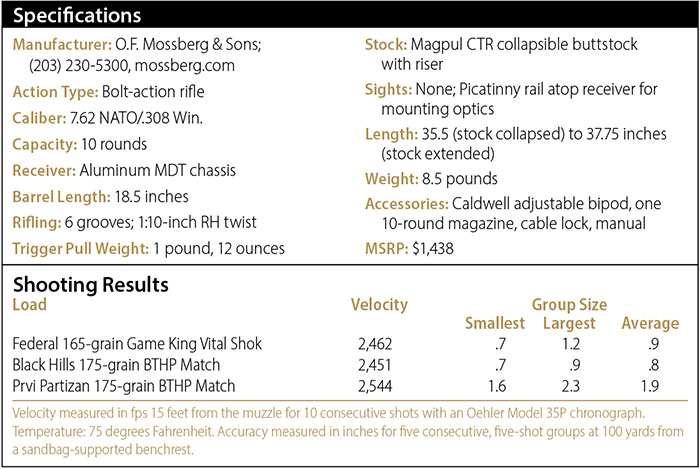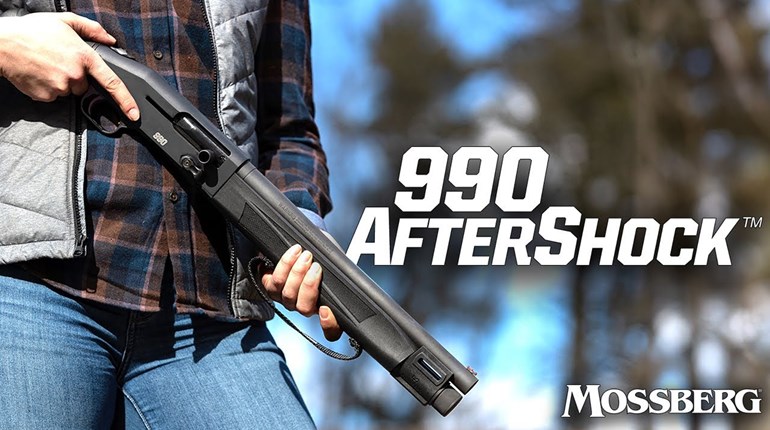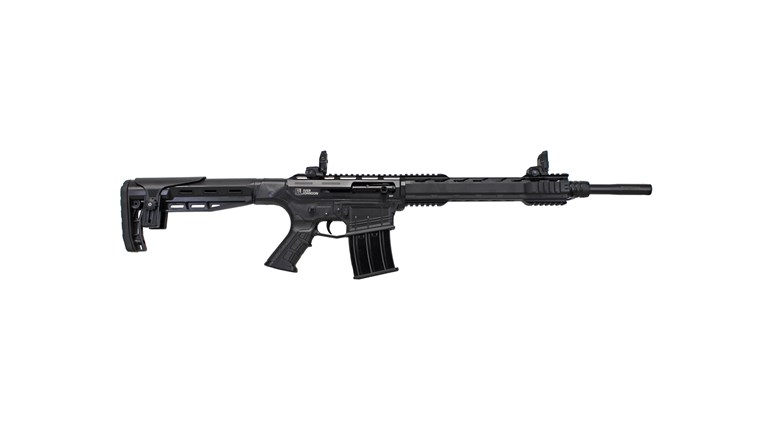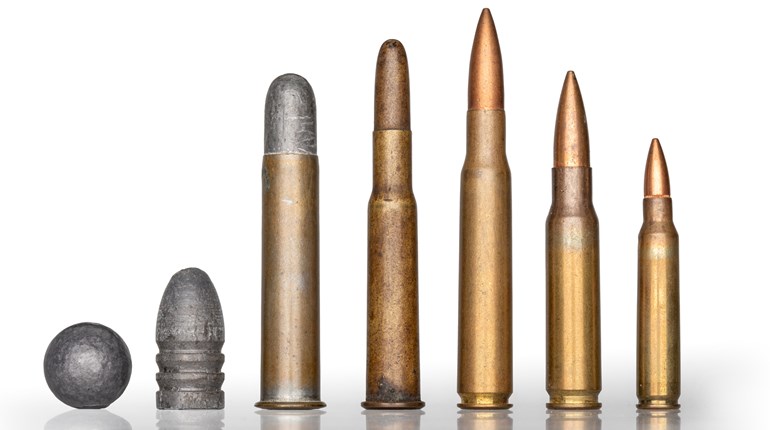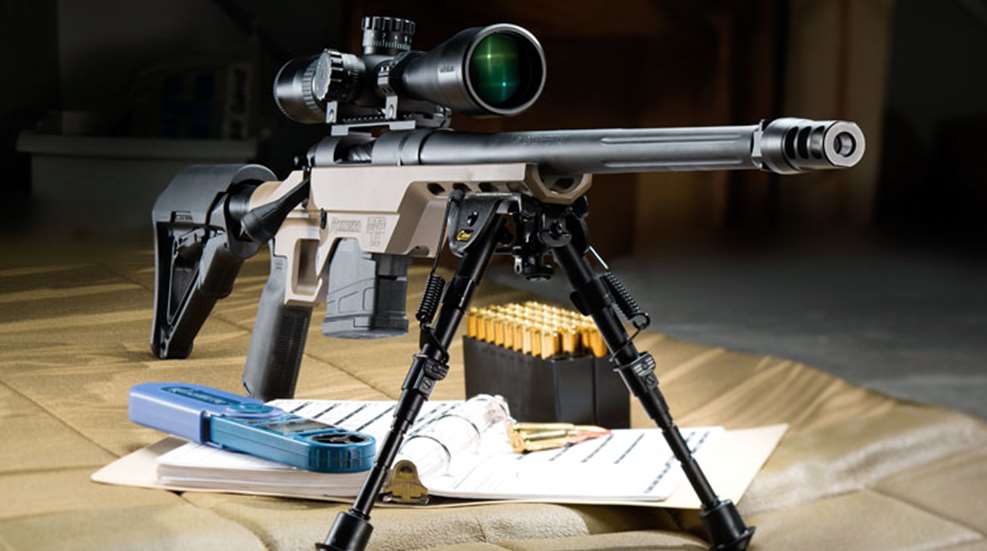
The first O. F. Mossberg & Sons firearm I ever handled was a pump-action shotgun. While more than 10 million Mossberg 500s have been sold, my first from this 96-year-old icon was the larger Model 835 turkey gun. I was initially attracted to the ambidextrous, top-tang safety, but I quickly realized the 835 was an awesome multi-purpose tool. Over the past two decades, this workhorse has shot trap and skeet, served in the home-defense role and hunted dove, deer and nearly everything in between (except turkeys). Its smoothbore, 26-inch barrel (with an Improved Cylinder choke tube) shoots slugs more accurately than any rifled-barrel slug gun I have ever fired. We have since added additional Mossbergs to the family, including a prized Model 500 I customized for my late father’s birthday several years ago. While in the Army, I jumped at the chance to use a modified 500 as my breaching shotgun. It had a lighter receiver and greater shell capacity over the standard-issue breaching gun and a safety that actually stayed on “safe” during the rigors of urban combat. That Mossberg was strapped to my kit during several CQB-heavy overseas tours and it never let me down once. But shotguns are just the beginning of Mossberg’s modern product line.
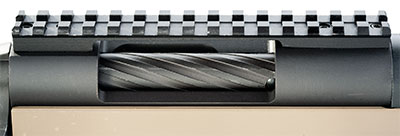
Over the past decade or so, I have really enjoyed seeing nearly every rifle-manufacturer roll out basic guns to compete with the traditional turn-bolt big dogs. But aside from a handy Model 702 Plinkster .22 LR we use as a “family gun” gun, I have had no prior experience with Mossberg rifles. The company’s bolt-action MVP family is a great representation of the trend toward budget-priced turnbolts that come factory-packed with features once reserved for custom rifles. The new-for-2015 MVP Light Chassis (LC) is a step further in the transition from entry-level models to high-end tactical rifles. I recently got a close look at one of these mid-priced shooters chambered in 7.62 NATO/.308 Win.
The MVP LC uses a one-piece, aluminum MDT chassis. The tan-colored MDT is relatively short compared to other tactical turnbolt chassis and this gives the LC a look all its own. Contact with the barrel is eliminated through free-floating, while the receiver is supported by a V-shaped bedding system. The fore-end has cooling/lightening slots, threaded holes for accessory rails and a Caldwell adjustable bipod pre-mounted. While not quite as stout as the Harris-type bipod it is styled after, the Caldwell still provides a stable rest right out of the box. I found that with the bipod mounted, there is not much space left to place a support hand when firing in upright positions owing to the short length of the fore-end. You can squeeze it in there, but the hand stays choked-up tight to the magazine well. Even though most heavy tactical rifles are designed with prone shooters in mind, the real world dictates our shooting positions much of the time, so a little more support-hand and accessory-mounting space could be useful here. Beyond that, it is a comfortable and functional chassis.
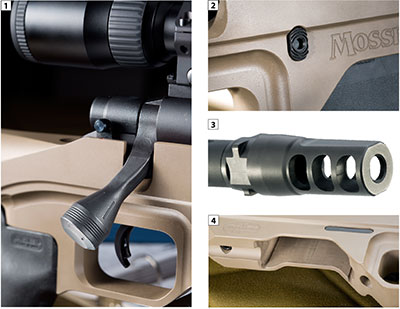
One solid aspect of the chassis is the magazine well. Its sides are cut out to enable quick reloading of five- and 10-round magazines while prone. Instead of turning the rifle sideways to remove and insert mags, they are simply angled in and out from the side, limiting the amount of movement needed by the shooter. Speaking of magazines, the MVP LC uses common AR-style mags, and the .308 Win. version accepts both DPMS-pattern and M1A/M14 magazines. Small, ear-like protrusions on the bottom of the .308 bolt head allow rounds to feed from either mag type. An AR-style magazine release button protrudes from the right side of the chassis in a location that will be familiar to legions of modern sporting rifle shooters. Continuing that theme, a Magpul MOE+ AR-style pistol grip is used on the chassis, just one of a huge number of grip options with the turn of a screwdriver.
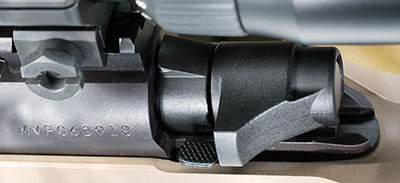
The chassis terminates just behind the pistol grip with a tubular extension that allows common AR collapsible stocks to be attached. The MVP LC comes standard with a Magpul CTR and snap-on, half-inch riser, but tall scope mounts will likely require a .75-inch riser—which is what I used for my evaluation. A fairly short receiver rail tops the action with Mil-Std 1913 slot spacing. I was surprised to find that three out of the four attaching screws on the test rifle were loose straight from the factory. It really pays to check any such screws on any rifle that is new to you. Loose receiver rails will turn any attempts to zero and group into a maddening waste of time and ammo. The MVP LC is also available with Vortex Viper HST 4-16x44 mm riflescope and rings, which adds about 50 percent to the rifle’s cost and about 1.5 pounds
of weight.

A nicely oversize bolt knob was easy to locate by feel and provided ample leverage for rapid cycling. The cock-on-opening bolt has spiral fluting that accomplishes several things. Aside from looking good, the flutes lighten the bolt (slightly). Most importantly, those flutes give any excess debris a place to go without impeding bolt movement when used in dirty conditions. The removable bolt-head has a Sako-style extractor and a stout, spring-loaded, plunger-type ejector in its face.
The .308 Win. action supports an 18.5-inch, chrome-moly barrel with a contour heavy enough to be stiff, but with longitudinal flutes to lighten front-half weight. The muzzle uses standard AR thread sizes and comes with a SilencerCo Saker muzzle brake/QD suppressor mount. Mossberg’s literature calls the barrel finish “blued,” but to my eyes it looks more like the matte black I like to see on a rifle destined for field use.
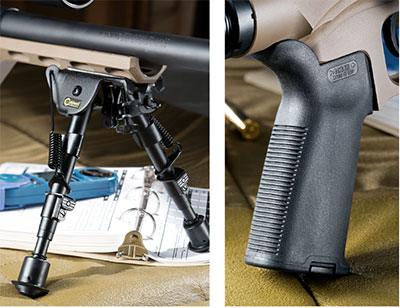
Like most new Mossberg bolt guns, the MVP LC has a user-adjustable, Lightning Bolt Action (LBA) trigger system with a published pull-weight range of 3 to 7 pounds. My test unit came set at 2 pounds, 8 ounces, and of course I could not leave that alone. I like a light, single-stage trigger on my bolt guns, so I turned it down further to 1.75 pounds. I checked with Mossberg about the weight range and was told that on the 7.62 NATO MVP variants, the triggers are “adjustable from 2 to 7 pounds, approximately.” The action has to be removed from the stock in order to adjust the trigger, a process which is pretty straightforward. After ensuring the rifle is clear, removing the action screws on the chassis bottom frees the stock. The barreled action can then be gently rocked out of the chassis to clear the recoil lug from its recess. A slotted setscrew on the front edge of the trigger assembly is turned counterclockwise to lighten the pull weight and vice versa to give a heavier pull. The aluminum MDT chassis prevents any compression due to overtightening of the action screws during reassembly, but I still used a measured 65 inch-pounds of torque because I am obsessive that way.
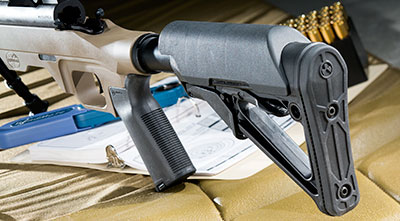
My range session with this rifle was very smooth overall. The two-position safety is in the usual right/rear bolt gun location and had distinct clicks in both positions. The bolt handle’s leverage came in handy when chambering the first round in every magazine—I had to really work to get the bolt moving forward once the head contacted the cartridge case. Successive rounds fed easily enough. The stout ejector threw cases from all loads tested straight back so they hit the chassis just behind the ejection port. Unfortunately, that meant that when firing from a bench hot cases dropped straight down on my right (support) arm. Fortunately when fired in any practical/field position, cases that drop straight down make it much easier to both conceal their ejection (think sniper) and find them before moving to another position (think sniper again).
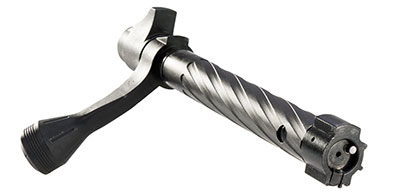
I started my range test with a clean bore and properly lubed bolt. The barrel was scrubbed and patched between each ammo type, too, just to keep it all even. Length-of-pull was easily adjusted with the collapsible stock, and the CTR’s friction lock eliminated most of the play common to AR-type stocks. The SilencerCo brake did its job well, though I was unable to test suppressor mounting and firing for lack of a compatible silencer. Beyond the initial round-feeding issue already described, function was flawless throughout the 80 rounds I fired. Accuracy was good for an out-of-the-box gun, with two loads averaging less than 1 MOA at 100 yards. More impressive was that one of those loads was a mixture of plain-old hunting fodder from multiple lots.
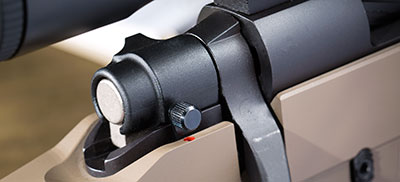
The MVP-LC has one ergonomic feature I did not like. The bolt release is a large, stamped steel lever protruding from the left side of the action near the rear of the bolt body. It is partially shrouded by the bolt, but the lever still juts out far enough to catch on gear when the rifle is slung across the front of a right-handed shooter’s body. Beyond that, the rifle handled and shot well for me.
Cleanup was bolt-gun simple. Fieldstripping takes all of 5 seconds and fouling was removed quickly from all surfaces. I noticed a large brass smear along the full length of the bolt’s bottom flutes—much more than I am used to seeing. I am unsure whether this was caused by the flutes’ edges or if it was just a matter of how high the magazine was positioned or both, but evidence of the difficult first-round feeding problem was clearly visible.
I may spend most of my time with semi-automatics these days, but my precision-shooting roots go back to accurate, practical bolt-action rifles. Mossberg’s new entry into the tactical arena takes me back to my first days as an Army sniper. Then and now, a simple, reliable rifle that has only what is needed, good ammunition and a firm application of the fundamentals are the keys to making easy hits on target. The MVP LC is a solid entry-level tactical rifle that should serve as a good platform for rugged field use.

